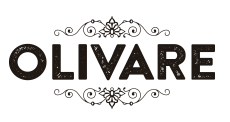What is AI Image Recognition for Object Detection?

A further study was conducted by Esteva et al. (2017) to classify 129,450 skin lesion clinical images using a pretrained single CNN GoogleNet inception-V3 structure. During the training phase, the input of the CNN network was pixels and disease labels only. For evaluation, biopsy-proven images were involved to classify melanomas versus nevi as well as benign seborrheic keratoses (SK) versus keratinocyte carcinomas. Previously, Blum et al. (2004) fulfilled a deep residual network (DRN) for classification of skin lesions using more than 50 layers. An ImageNet dataset was employed to pretrain the DRN for initializing the weights and deconvolutional layers. A lot of researchers publish their successful machine learning projects related to image recognition, but it is still hard to implement them.
It is used by many companies to detect different faces at the same time, in order to know how many people there are in an image for example. Face recognition can be used by police and security forces to identify criminals or victims. Face analysis involves gender detection, emotion estimation, age estimation, etc. It is often the case that in (video) images only a certain zone is relevant to carry out an image recognition analysis.
Object Recognition
These systems leverage machine learning algorithms to train models on labeled datasets and learn patterns and features that are characteristic of specific objects or classes. By feeding the algorithms with immense amounts of training data, they can learn to identify and classify objects accurately. Convolutional Neural Networks (CNNs) are a class of deep learning models designed to automatically learn and extract hierarchical features from images. CNNs consist of layers that perform convolution, pooling, and fully connected operations.
Concern over police ‘using passport images’ for facial recognition – Tech Monitor
Concern over police ‘using passport images’ for facial recognition.
Posted: Wed, 04 Oct 2023 07:00:00 GMT [source]
By extracting and recognizing the patterns, the system learns to accurately detect objects, classify them and create required algorithms. Most image recognition solutions apply a neural network to analyze the information properly. Nanonets is a leading provider of custom image recognition solutions, enabling businesses to leverage this technology to improve their operations and enhance customer experiences. A convolutional neural network is right now assisting AI to recognize the images.
AI Image Recognition: How and Why It Works
For example, pedestrians or other vulnerable road users on industrial sites can be localised to prevent incidents with heavy equipment. Current and future applications of image recognition include smart photo libraries, targeted advertising, interactive media, accessibility for the visually impaired and enhanced research capabilities. Simply put, it is the task of identifying objects of interest within an image and recognizing to which category they belong. Photo recognition and image recognition are terms that are used interchangeably.
To the point: technology & digitalisation l October 2023 – Lexology
To the point: technology & digitalisation l October 2023.
Posted: Tue, 31 Oct 2023 13:01:26 GMT [source]
The Trendskout AI software executes thousands of combinations of algorithms in the backend. Depending on the number of frames and objects to be processed, this search can take from a few hours to days. As soon as the best-performing model has been compiled, the administrator is notified. Together with this model, a number of metrics are presented that reflect the accuracy and overall quality of the constructed model. The first steps towards what would later become image recognition technology were taken in the late 1950s. An influential 1959 paper by neurophysiologists David Hubel and Torsten Wiesel is often cited as the starting point.
Image recognition use cases
It gets stronger by accessing more and more images, real-time big data, and other unique applications. Therefore, businesses that wisely harness these services are the ones that are poised for success. Well, this is not the case with social networking giants like Facebook and Google.
- This technique had been around for a while, but at the time most people did not yet see its potential to be useful.
- The convolution layers in each successive layer can recognize more complex, detailed features—visual representations of what the image depicts.
- Because it is still under development, misidentifications cannot be ruled out.
- Then, the neural networks need the training data to draw patterns and create perceptions.
- Deep learning models, such as convolutional neural networks (CNNs) and recurrent neural networks (RNNs), have a high capacity to process large amounts of visual information and extract meaningful features.
- Computer vision, the field concerning machines being able to understand images and videos, is one of the hottest topics in the tech industry.
But, one potential start date that we could choose is a seminar that took place at Dartmouth College in 1956. This seminar brought scientists from separate fields together to discuss the potential of developing machines with the ability to think. In essence, this seminar could be considered the birth of Artificial Intelligence. Created in the year 2002, Torch is used by the Facebook AI Research (FAIR), which had open-sourced a few of its modules in early 2015. Google TensorFlow is also a well-known library with its selected parts open sourced late 2015.
Dutch MPs criticise new US export ban on ASML chip machine
AI Image recognition is a computer vision technique that allows machines to interpret and categorize what they “see” in images or videos. Often referred to as “image classification” or “image labeling”, this core task is a foundational component in solving many computer vision-based machine learning problems. Machine learning allows computers to learn without explicit programming. You don’t need to be a rocket scientist to use the Our App to create machine learning models.
Read more about https://www.metadialog.com/ here.
